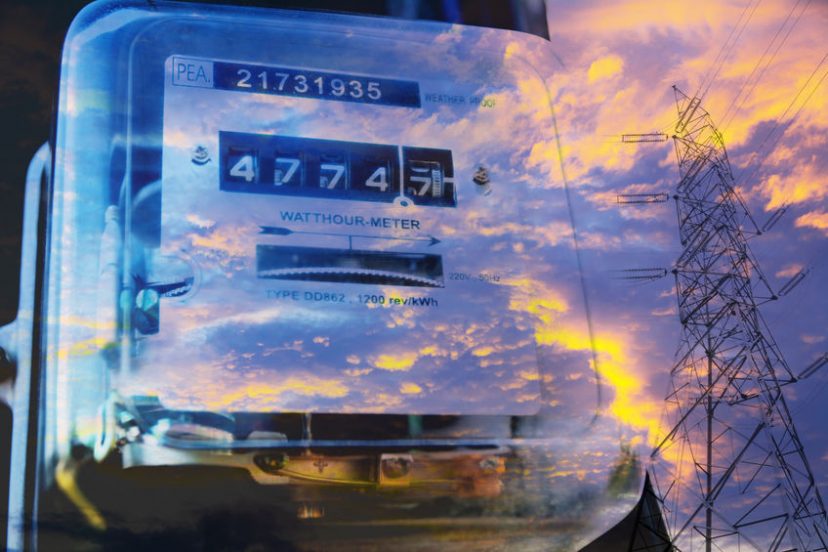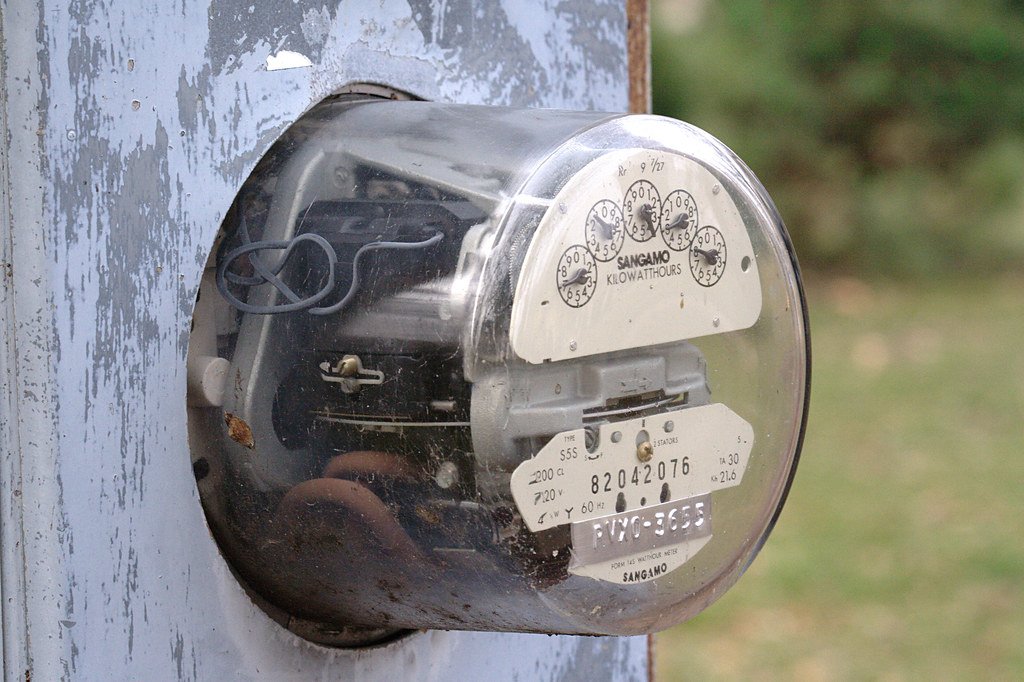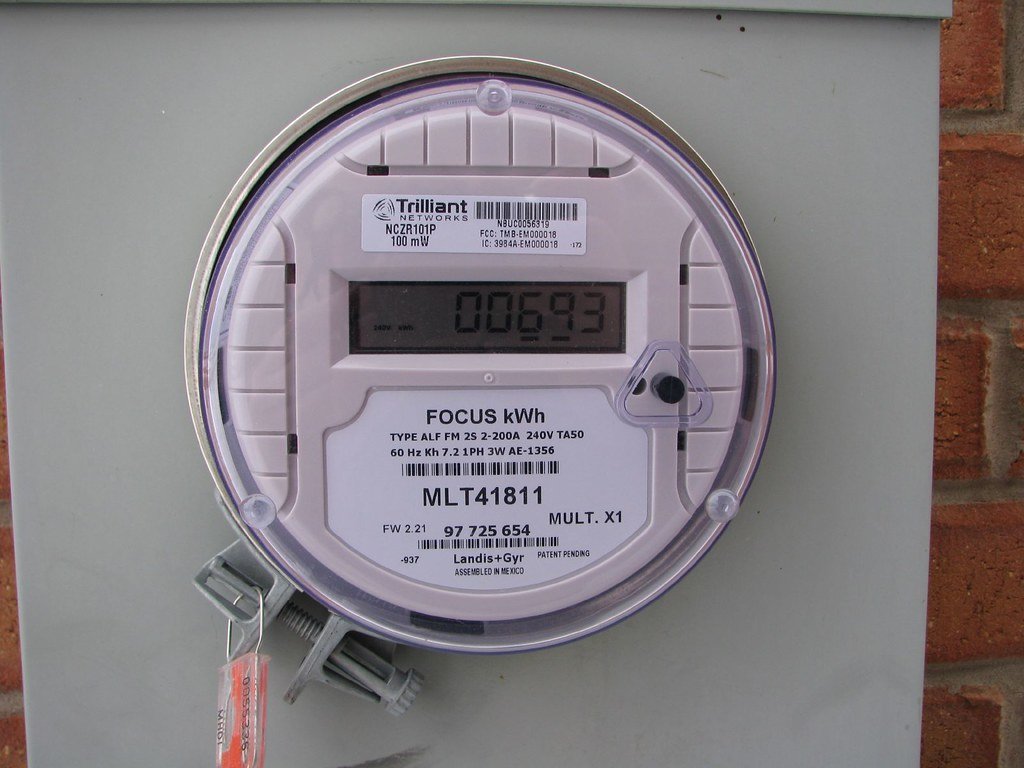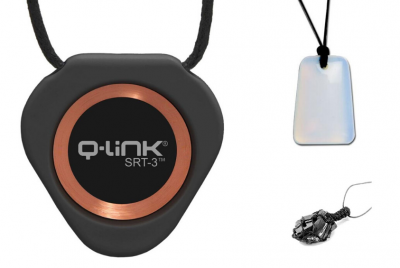When worn correctly, both Bluetooth and wired earbuds offer a lightweight and comfortable way to listen…
Smart Meter Radiation: What You Should Know

*We may earn a commission for purchases made using our links. Please see our disclosure to learn more.
Years ago, when the utility company wanted to check your gas or water usage, they would have to manually go to your meter and take the measurement. The reading was displayed on a gauge located on the meter itself. The process was fairly time consuming and inefficient, and many municipalities sought to find a better way of taking these readings.
Enter the smart meter. In recent years, cities and towns have begun to switch over to this new technology. The smart meter transmits your usage information wirelessly to the meter reader as they drive by. There’s no need for them to leave the vehicle or enter your property. There is no doubt that this process is more convenient than manually reading the meter.
It turns out, however, that this convenience could come at a price: your health. Smart meters produce electric and magnetic field (EMF) radiation. And EMF radiation has been linked to a number of serious health complaints.
You may not be able to control whether or not your city has switched to smart meters. But there are steps you can take to reduce the amount of EMF radiation that leaks into your home.
We’ve put together a guide that breaks down everything you need to know about EMF and smart meters, including what you can do to protect your home. Let’s get started.
EMF radiation and smart meters
First, let’s take a step back and look at exactly why smart meters are dangerous. Smart meters transmit data wirelessly, allowing the utility companies to track your usage, install software, or even turn off your electricity all without ever having to physically go to your home. In order to achieve this, the device produces radiofrequency waves.
These radiofrequency (RF) waves are a form of non-ionizing radiation. RF-EMF radiation broadcasts at a much higher frequency than the extra-low frequency (ELF) EMFs produced by power lines and electricity. And while the amount produced by a smart meter is within the legal limits on non-ionizing radiation, there has been growing international concern that perhaps no amount of exposure is safe.
Risks of exposure
Smart meters increase the overall level of EMF radiation found in your home, particularly RF-EMF radiation. RF-EMF radiation, in high enough quantities, is a known carcinogen. There is more research needed to determine the effects of lower levels, but the American Cancer Society acknowledges that there is a possible cancer risk from the use of smart meters.
Various varieties of EMF radiation have been linked to leukemia, glioma, and other serious and often fatal forms of cancer. EMF stimulates tumor growth in susceptible individuals, as well. Although the carcinogenic effects of ionizing radiation are much better studied and publicized, the evidence so far suggests that EMF radiation’s cancer-causing abilities should be cause for concern.
In addition to the increased cancer risk, EMF radiation has been linked to issues with male fertility. Problems with sperm motility and morphology have been noted in men who store their cell phones in their pockets. Cell phones are a significant producer of RF-EMF radiation. In pregnant women, EMF radiation has also been shown to increase the risk of miscarriage.
For sensitive people or those experiencing EMF overload, EMF radiation can cause dizziness, insomnia, itchiness, and a variety of other symptoms. Those experiencing these symptoms may notice immediate relief when they enter an area with lower EMF levels.
Do you have a smart meter?

Analog Meter 
Smart Meter
“Watthour Meter” by Beige Alert is licensed under CC BY 2.0
“IMG_0034” by Miss Efficiency is licensed under CC BY-SA 2.0
It’s not always immediately apparent whether or not you have a smart meter. You may need to call your local utility company or the appropriate city department (the name varies by municipality, but generally you would call the water department or department of municipal works). The clerk may not know, so you may need to speak with a technician or even the head of the department.
You could also try finding the brand and model on the meter, and doing an Internet search to determine if that manufacturer makes smart meters.
Minimizing smart meter radiation exposure
If you read the last section and discovered you have a smart meter, you may be alarmed. And for good reason. It can be difficult to minimize your exposure to smart meters because often the consumer has very little say over what kind of meter the utility company uses. They are usually upgraded over time on a municipality-wide basis, so odds are if you have one, so does your entire community. Most cities will not allow you to buy and install your own meter, particularly if the city is using smart meter technology. That would translate to more work for their employees, who would then have to take manual readings at certain houses.
If you live in an area that requires the use of smart meters, you can try and reduce the overall level of EMF radiation in your home. This won’t change the amount of EMF radiation produced by your smart meter, but it will lower your family’s cumulative exposure. A few things you can do include:
- Ditch your wireless internet and establish a wired connection.WiFi is a major producer of EMF radiation, and we are exposed to it 24 hours a day. This step alone will significantly impact your home’s overall radiation levels.
- Switch your cell phone to airplane mode when not in use. At the very least, don’t keep it near you at night. And definitely don’t store it in your pocket during the day.
- Swap out any smart bulbs, LEDs, or CFLs for incandescent bulbs. Although they are a little less energy efficient, incandescents produce less RF and ELF radiation and are the safest alternative to modern, energy-efficient options.
- Invest in a high-quality EMF meter capable of detecting both ELF and RF radiation. This step is important because it allows you to check your baseline levels, track down the biggest EMF producers in your home, and monitor your exposure over time. One great meter is the TriField TF2.
Once you’ve found an EMF meter, use it to check your home’s EMF levels. Do this before and after making any major changes so you can determine which things work and which don’t. For example, if you decide to switch to wired internet, check your EMF levels before and after switching.
- Purchase or make your own smart meter cover. These covers go over your smart meter and help reduce some of the EMF radiation emitted by the device.
- Create a barrier on the inside of your home using certain metals or EMF-repellant paint. This is an easy step that can have a big impact.
What is a smart meter cover?
A smart meter cover is a device that goes around your existing smart meter. It prevents EMF radiation from the smart meter from entering outdoor living spaces such as your backyard or patio. This is especially important if your meter is located in a heavily trafficked area. However, because smart meters tend to produce a great deal of RF-EMF radiation, smart meter covers are warranted even when the meter is located a little off the beaten path.
Smart meter covers act as Faraday cages, blocking electric and magnetic radiation from penetrating the cage. They essentially contain the radiation emitted by the smart meter, without blocking the signal needed by your utility company.
SmartMeterGuard EMF Cover
Smart Meter Guard’s EMF Cover receives great reviews online. It attaches over your smart meter and is made from high-quality stainless steel that won’t rust or break over time. Overall, it’s a high-quality product that is built to withstand harsh weather conditions. If you live in an area that experiences cold and snowy winters, this is a great cover to consider.
Build your own
If you don’t want to spend the money on a premade cover — or if you just like the satisfaction of a DIY-job well done — consider making your own smart meter cover. It takes a little bit of creativity, but the monetary investment is minimal.
When making a homemade cover, seek out materials that are known to repel electric and magnetic frequencies, as well as radio frequencies. Aluminum foil is one popular and easily accessible choice. Nickel-copper ripstop is a little pricier but can make for a longer-lasting solution.
Secure your materials to the sides of your smart meter cover. Take care not to make any permanent alterations to the meter itself, or to damage it in any way. If you are covering the top of the meter, use a metal mesh. The holes in the mesh will allow your utility company to continue to receive and send signals to the meter.
If you do create your own cover, use an EMF meter to test the area around the smart meter, as well as inside your home, before and after installing the cover. This step will allow you to ensure that the cover you created is actually effective at reflecting and absorbing EMF radiation. You don’t want to accidentally reflect all the radiation into your living room in an effort to keep your patio safe.
Creating a barrier
In addition to using a smart meter, you also should consider creating a barrier in the interior of your home, on the other side of the wall from the smart meter. This is a simple step that will stop excess EMF radiation from penetrating your home’s walls.
To create a barrier, there are a couple potential things you can try. The first is to make a homemade shield, using a reflector and absorber. The job of the reflector is to bounce any radiation away from your living space. The job of the absorber is to then absorb the reflected radiation, so it doesn’t enter the atmosphere.
The same materials used in the DIY meter cover, aluminum foil or nickel-copper ripstop, are ideal reflectors. For the absorber, find a material that is capable of absorbing RF radiation. Pre-made shields are also available. Simply hang the sheet inside your home directly opposite of where the EMF meter is located.
EMF paint is also an option. Woremor claims that it’s paint is 99.95% effective with one layer, and 99.998% effective with two layers. If you go this route, you’ll need to paint the inside wall opposite the smart meter with the RF-shielding paint.
Just like with the meter cover, it’s wise to use an EMF meter to check your home’s levels before and after installing a barrier. This step lets you know for certain that the method you choose is actually effective at reducing your home’s EMF levels.
Parting Words
In an effort to cut costs and increase efficiency, cities are switching to potentially dangerous smart meters. As these smart meters continue to grow in popularity, it’s important to know what steps you can take to keep you and your family safe.
Smart meter covers, whether store-bought or homemade, are one way to reduce your home’s overall EMF levels. These covers allow utility companies to do what they need to do while preventing EMF radiation from entering backyard spaces and patios. They are inexpensive, particularly when hand made, and unobtrusive.
Another great way to protect your home from smart meter radiation is to create a barrier between your interior and the smart meter. EMF repellant paint or a homemade shield are both effective and simple methods for repelling your smart meter’s radiation and preventing it from entering your living space.
Ideally, aim to use a smart meter cover outside and a protective barrier inside your home. This combination offers the safest way to coexist with smart meter technology. It’s unlikely to go away any time soon, so it’s best to adapt now.






